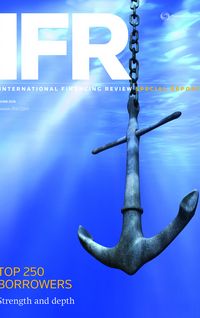Indonesia has been a staple provider of debt from a sector which suffers from chronic undersupply – Asian offshore sovereign debt – and has earned a reputation as a savvy market reader. As the nation’s budget deficit increases, expect it to appear more regularly with similar deals to its recent chunky euro foray.
Indonesia has won its reputation the hard way, after years of brickbats from bankers and investors critical of its heavy-handed approach to issuance, which involved long drawn-out timelines and what became a signature compromising of price tension in the execution process.
But a streamlining of the diligence process and a consequent tightening of execution in recent years has seen Indonesia emerge as a standard-bearer for offshore sovereign issuance from the region. Arguably, it has replaced the Philippines as the sine qua non of offshore public sovereign issuance in the region, as its regional peer has focused on bringing domestic bonds where possible and on reining in its offshore debt stock.
Indonesia’s recent €3bn seven and 12-year was something of a showcase in this regard, emerging as the largest public offering in the currency from ex-Japan Asia and printing €1bn larger than the original plan on the back of a roughly four-times-subscribed book for both tranches.
The Republic demonstrated the opportunistic drive-by approach that had become the Philippines’ trademark, pricing after the release of a US nonfarm payroll number that was sufficiently weak to rule out an imminent rate hike from the Federal Reserve, and into a rallying Treasury and euro government bond market.
“Indonesia used to engage in ultra-drawn-out marketing periods for its offshore primary debt, which invariably resulted in damp squib deals and poor secondary market performance. What they showed with this recent deal was that they are able to find the perfect market window and moreover to call upon a deep investor base even in a currency where for quite a few buyers there isn’t deep familiarity with the name,” said a Hong Kong DCM head.
The Republic first issued in euros in 2014 with a €1bn seven-year that was almost seven times subscribed – the highest cover ratio in Indonesia’s issuance history – and which represented the first Asian sovereign benchmark euro deal in eight years, since the Philippines priced a €500m 10-year in 2006.
Euros despite cost
The euro has been a rich source of Asian G3 issuance this year, with the European Central Bank’s ultra-low-rate policy enticing issuers despite a less-than-benign basis swap, against which issuing in US dollars remains the cheaper option. Indeed, Indonesia paid up versus what could have been achieved in dollars, with the recent seven-year coming in at euro swaps plus 260bp and the 12s at plus 325bp, which equated to around dollar swaps plus 100bp on each tranche.
“It looks like they paid up, but they may have been making a call on the rupiah/euro foreign exchange rate, which was close to an all-time low when they brought the issuance. Arguably, the rupiah has more ground to make up against the euro than the dollar, where in the latter case rate normalisation is on the horizon, whereas in the eurozone that’s still a long way off,” said the DCM head.
“Indonesia’s debut euro deal can best be described as both pragmatic and strategic. Emerging market investors have broadened their mandates and euro assets as a result have a strong bid. The Republic has a natural need for euros, so the relative pricing using the dollar basis is not so relevant,” said Jake Gearhart, head of APAC debt syndication and origination at Deutsche Bank in Singapore.
“Their roadshow marketing strategy was smart, delivering the desired results of a high participation rate from the investors they met. In turn, they have nurtured a strategically significant long-term investor base and locked into relatively low euro coupons for the life of the bond.”
Meanwhile, Indonesia issued in mid-June a ¥100bn (US$1bn) three and five-year Samurai without the usual credit enhancement it has enjoyed from the Japan Bank for International Cooperation (JBIC), in what represented Indonesia’s first standalone Samurai since 1983. The deal cemented the new reality of a negative interest rate Japanese bond market.
Indonesia, which is rated Baa3/BB+/BBB–, found demand in a market starved of paper – Societe Generale reopened the Samurai market in late May 2016 after its near four-month closure. With yen investors confronting a Japanese government bond yield curve which is negative out to 12 years and an interbank swap market negative out to six years, any yen deal is now marketed on the basis of absolute yield rather than spread to JGBs.
So, the yen offer-side swaps plus 95bp offered on the ¥62bn three-year tranche and plus 125bp on the ¥32bn five-year at respective coupons of 0.83% and 1.16% explained the deal’s traction.
Moreover, it looked like a smart piece of pre-funding. In early June, Indonesia’s finance minister, Bambang Brodjonegoro, announced to the budget committee that the Republic would issue Rp57.8trn (US$4.23bn) of bonds to plug a larger-than-expected hole of 2.48% of GDP in the fiscal deficit, versus an initial projection of 2.15%.
Assuming that figure proves on the mark, together with the recent euro issuance, Indonesia has met its funding needs for 2016 with the US$1bn-equivalent Samurai.
To see the digital version of this special report, please click here
To purchase printed copies or a PDF of this report, please email gloria.balbastro@thomsonreuters.com




